
Technically Speaking
- Subject: Changes in transmission-range sensor
- Unit: AX4N
- Vehicle Application: 1998-99 Mercury Sable and Ford Taurus
- Essential Reading: Rebuilder, Diagnostician
- Author: Wayne Colonna, ATSG, Transmission Digest Technical Editor
The acronym VIN is known to mean “vehicle identification number” but it also should be known as a “very important number.” Here is a good example of why that’s so.
Recently we handled a call on our technical hotline for a 1999 Mercury Sable 3.0-liter AX4N with shifting problems. Codes P1702 and P0708 were retrieved, indicating a problem with the 12-terminal-style transmission range sensor (TRS). The first priority is to resolve these TRS codes, as a faulty TRS signal will indeed have an ill effect on shift scheduling. So the shop bought a new sensor at the dealership and installed it on the vehicle, but the same codes and problem remained. To appreciate what occurred, a little explanation needs to be given about the two different types of TRS in use.
Originally this TRS was called the manual-lever-position sensor MLPS (see Figure 1), which contained a series of step-down resistors (see Figure 2).
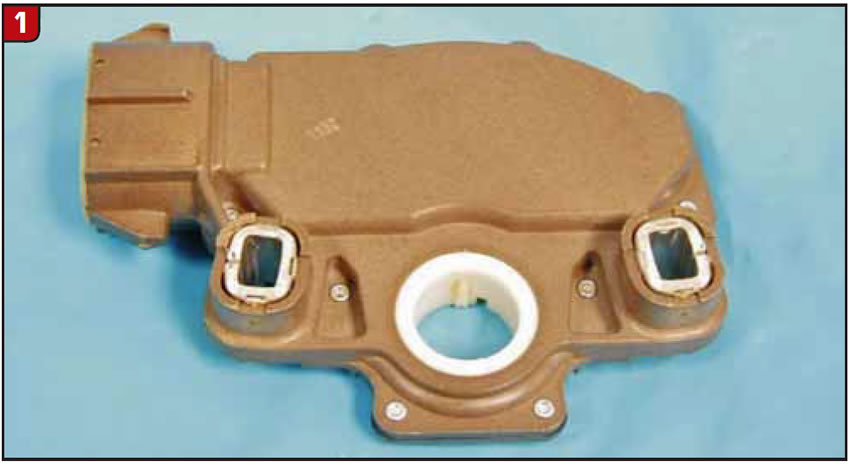
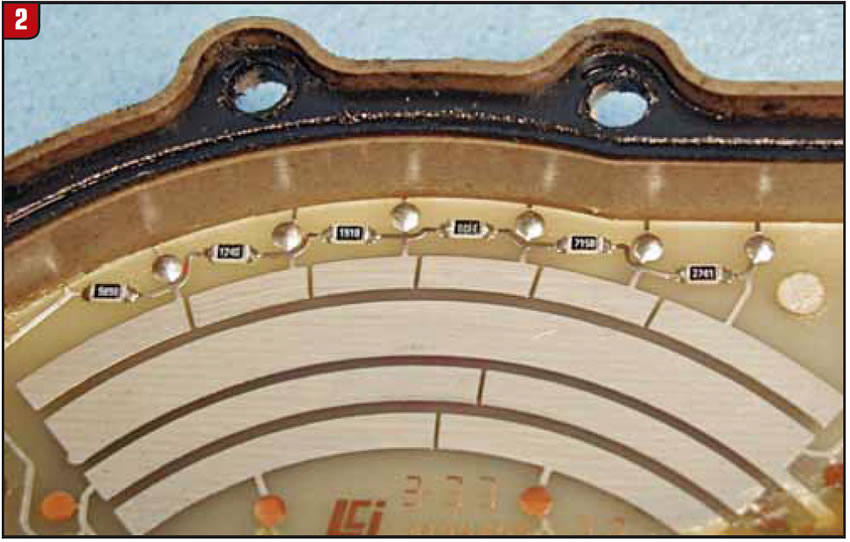
In Park, a 5-volt wire from the PCM was routed through all the resistors (see Figure 3), totaling about 4,000 ohms of resistance to ground. This would provide about a 4.5-volt signal at the PCM. The PCM would then interpret that signal to mean that the selector lever was in the Park position.
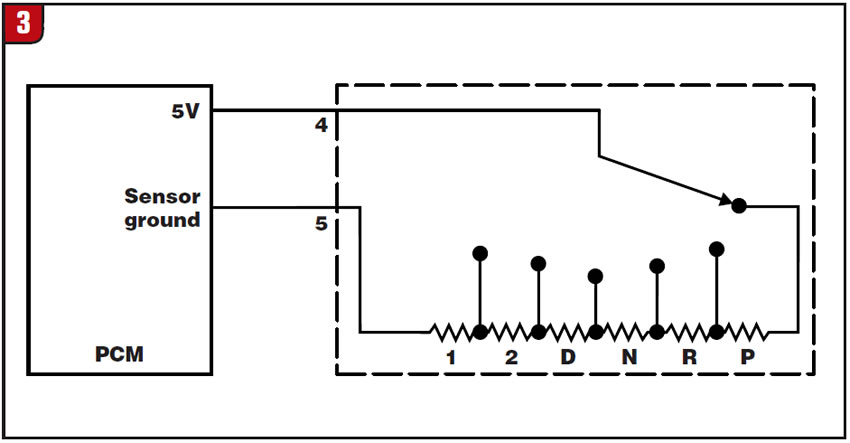
When the driver moved the selector lever to the Reverse position, one of the resistors was dropped and now the 5-volt wire was routed through the remaining resistors, totaling about 1,400 ohms of resistance. This caused the 5-volt wire from the PCM to be pulled to ground a bit more than in Park, providing a voltage value of about 3.5 volts. The PCM would then interpret that signal to mean that the selector lever was in the Reverse position.
And when the selector lever was moved to Neutral, another resistor was bypassed, as with OD/D, D/2 and manual low, with voltage-drop values of about 2.5, 2.0, 1.5 and 0.5 respectively (see Figure 4). This MLPS used an eight-terminal connector (see Figure 5), with terminal 4 being the 5-volt wire coming from the PCM and terminal 5 being the ground path.
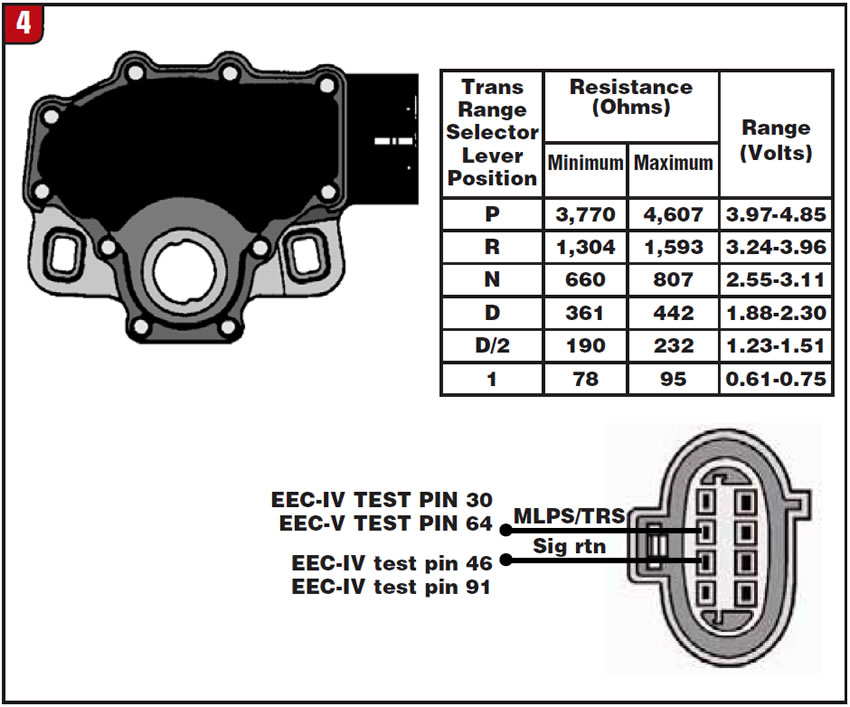
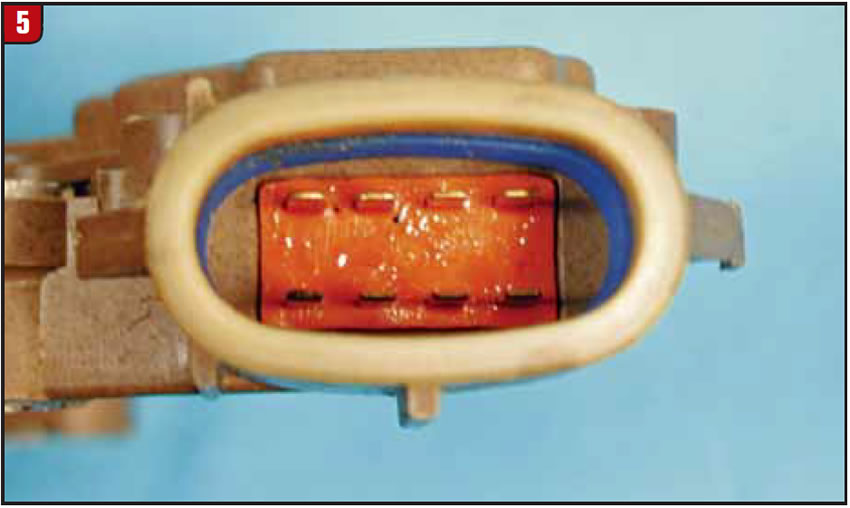
In 1997 Ranger vehicles this sensor was replaced with what is now called a digital transmission range sensor (DTRS) (see Figure 6). The DTRS has progressively replaced the MLPS in years following in all other vehicles. This sensor is considerably more reliable in comparison and works entirely differently.
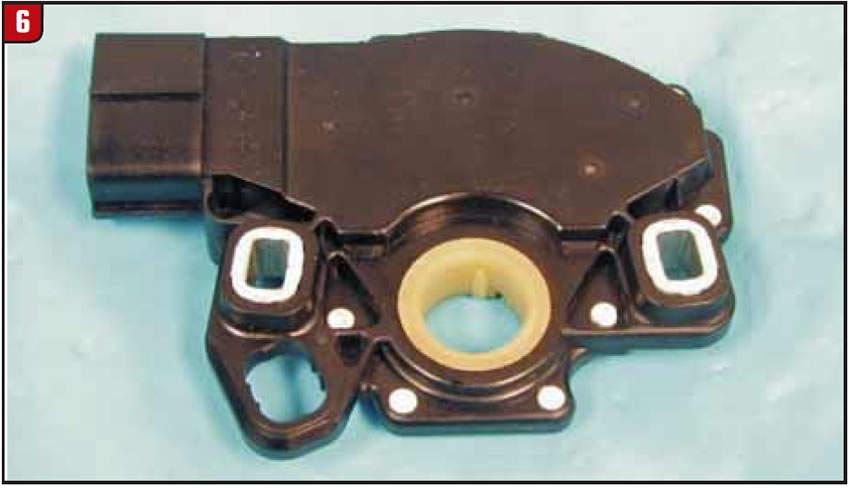
There are three wires going to this DTRS from the PCM that have about 10 to 12 volts on each of them, and a 4th wire is supplied with 5 volts from the PCM. The three wires with 10 to 12 volts are referred to as TR1, TR2 and TR4; the 5-volt wire is referred to as TR3A (see Figure 7).
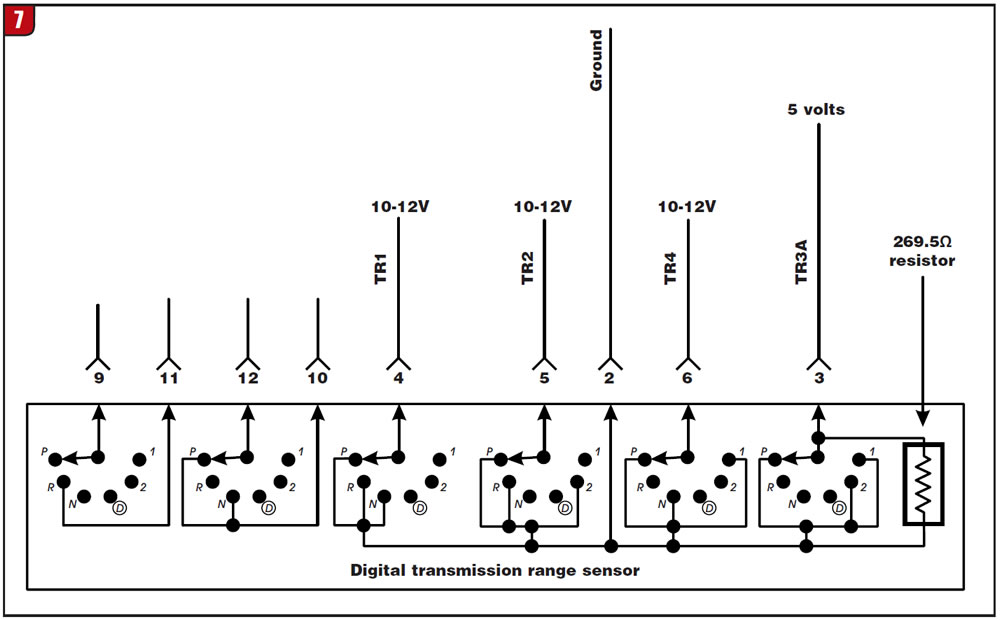
As the selector lever is moved from Park through all the different ranges, these wires are grounded in different sequences that the computer uses to interpret gear selection (see Figure 8). When TR1, TR2 and TR4 are grounded, you will observe no voltage on their respective wires. When they are open, you will observe 10 to 12 volts.
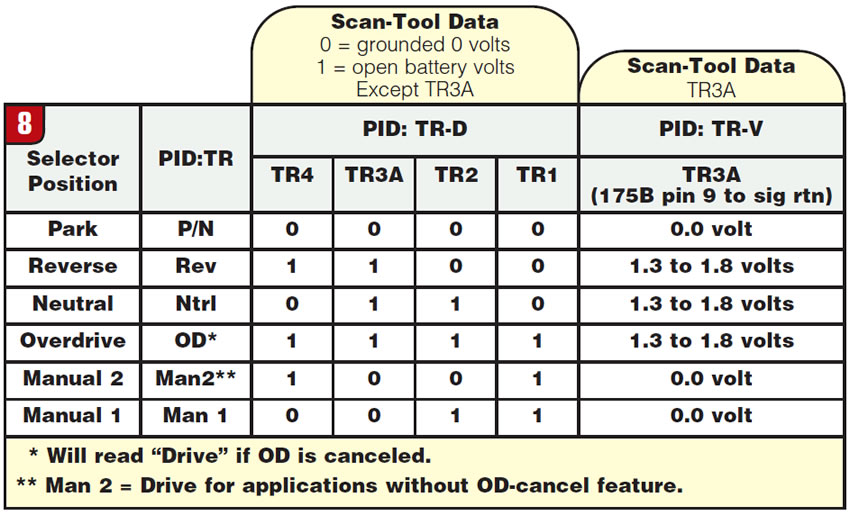
The TR3A is altogether different. This is a 5-volt wire, and in Park, 2 and L it is fully grounded so that you will observe no voltage on this wire. But in Reverse, Neutral and OD it is grounded through a 269.5-ohm resistor, and you will observe about 1.6 volts. This DTRS uses a 12-terminal connector (see Figure 9), with terminal 3 being the 5-volt TR3A wire coming from the PCM and terminal 2 being the ground path (see Figure 7).
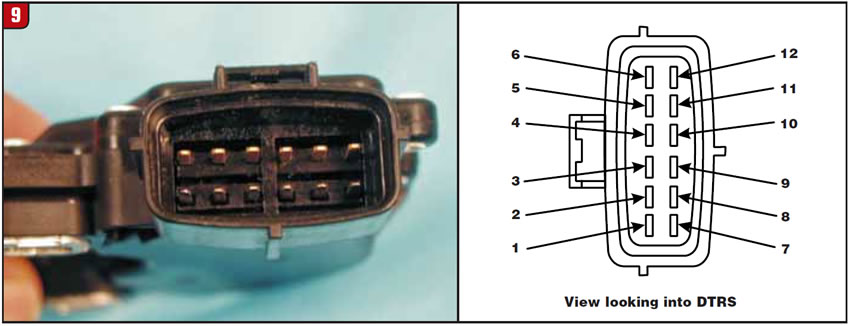
Now, getting back to the 1999 Sable – since it had codes related to a faulty TRS, it was easier and faster to just replace the sensor instead of spending time yanking a wire diagram and hooking up meters. More times than not it usually is a bad sensor anyway, so the odds of its being a bad sensor are favorable. Now, when the TRS was removed it was apparent that there were 12 terminals in it, so it was determined that this was a DTRS. As a result, it was replaced with a new DTRS, yet the same shift problem and codes remained.
Now it was time to pull a wiring diagram, and what was discovered is that a 1999 Mercury Sable 3.0-liter could have either a DTRS or MLPS. It all depends on the engine identified in the VIN, S indicating the 3.0 two-valve or U indicating the 3.0 four-valve. Additionally, the later MLPS is configured with a 12-pin connector instead of the previous eight-terminal connector, causing the confusion and allowing a misapplication to occur. And it gets better: The 5-volt wire from terminal 64 in the PCM is the 5-volt wire used for the TR3A in DTRS applications; in the MLPS applications, it is the 5-volt wire that gets pulled down through the various dropping resistors.
This particular vehicle had S in the VIN for the engine, which required the later 12-pin MLPS. The original MLPS was defective, and incorrectly using a DTRS duplicated the symptoms produced by the bad MLPS.
After further review, it was learned that this is also the case with Ford Taurus vehicles and that this can be isolated to two model years, 1998 and 1999. 1997 and earlier vehicles use the MLPS, and 2000 and later use the DTRS. But for these two model years, you will need the “very important number” (VIN) to get the right sensor, and it breaks down like this:
- 1998 and 1999 Tauruses having a VIN with N (for SHO) or S use the 12-pin MLPS.
- 1998 and 1999 Tauruses having a VIN with 1 or 2 (for Flex Fuel) or U use the DTRS.
- 1998 and 1999 Sables with S in the VIN use the 12-pin MLPS.
- 1998 and 1999 Sables with U in the VIN use the DTRS.
The part numbers at the time of this printing are:
- 12-pin MLPS F6DZ-7F293-A
- 12-pin DTRS F8DZ-7F293-AD
Many thanks to Ken and Collin from Ken’s Transmissions in Pennsylvania for their help with this article.














